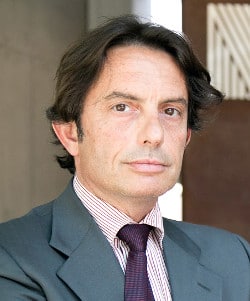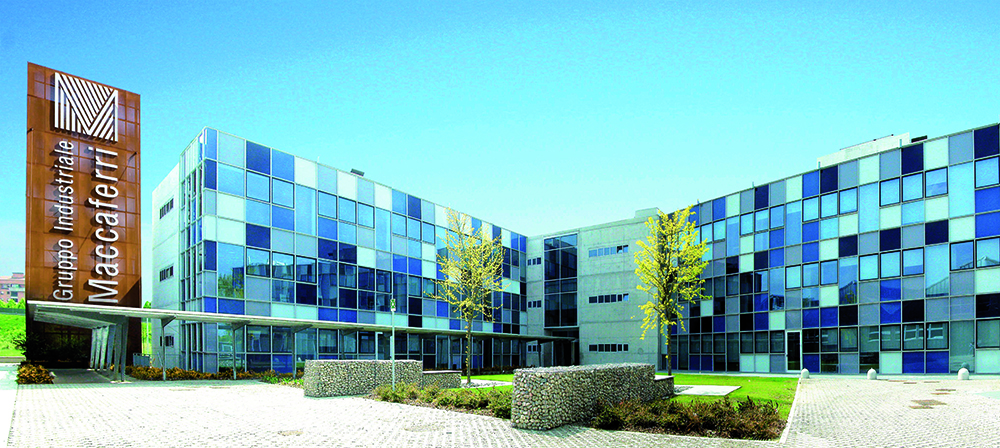pv magazine: Given Enerray’s position in European and other global markets, can you talk about what Enerray’s presence in the United States has been to date, and how you see this market?
 Michele Scandellari: The U.S. is a very important market, probably the first or the second in terms of yearly installed capacity and one of the most important for the presence of major international players, developers and IPPs.
Michele Scandellari: The U.S. is a very important market, probably the first or the second in terms of yearly installed capacity and one of the most important for the presence of major international players, developers and IPPs.
Enerray is part of a large industrial group (Maccaferri Group) with a strong and long historical presence in the U.S, a turnover of 1,27 millions of Euros and several sister companies in the renewable space internationally and in the Americas. So, a couple of years ago we started exploring the U.S. market with our colleague Daniela. As EPC initially, we did some market research to understand the local market and the needs of the U.S. IPPs and developers, not just PV but the all the renewables. Our idea was to leverage the presence in the U.S. throughout the Americas and through cross-selling opportunities between sister companies.
Now we are fine-tuning our approach to the U.S market. We definitely have some uncertainty on what is going to happen in the next few months on the modules, but we believe the market will adjust. So, in addition to provide EPC services to U.S. IPPs and developers on their international projects we are now trying to serve them also here on the mid-size projects space from 5 to 20 MW. We are not going into competition with the big EPC players on the gigantic sites. We want to offer the level of service you would expect on a big utility scale project also on the small ones.
On the big utility scale projects a lot of IPPs and developers have already partnership in place with EPCs and established relations, this allow to increase efficiency and squeeze the cost of installation. So as a newcomer we will not be bringing any particular added value to such large-scale installations. But we do believe that in the middle range projects, which means for us from 5- 20 MW, there is a lot of space as this size is too small to be appealing to the big contractors and too big for small contractors.
We believe we could find our niche into the distributed generation space, where projects might be small but sometime technically challenging and often complex from the business model point of view: small projects that need several professionals to make it happens.
An example of these type of projects is community share solar, that we believe is going to grow a lot in the next years. In community share solar you need several professionals to make a project happen and we believe an EPC with some flexibility can provide great value to the business model and project value chain.
pv magazine: Back to this Section 201 trade case – what are your thoughts on how this can affect the U.S. market, and how this can make the market less attractive for a company like yours?
Scandellari: A lot will depend on what the recommendation is going to be. The impact on price on the imported modules could be really high and it could freeze the market. In any case, in 2018 because of the uncertainty, the market might slow down and set on pause. Investors might complete the projects already under construction, and then wait and we see what happens.
If the remedies will reflect in a strong increase in modules cost then, probably the market will freeze for more than one year, and depending on the perception of the fairness of the remedies, foreign investors could take a careful approach about investing in the U.S. in the medium term.
pv magazine: Your company does both project development, construction, and is a co-financier in projects. Can you talk about how that business model, of being engaged at multiple points along the development, how that works as opposed to being a standalone EPC, or a standalone developer?
Scandellari: The market is international, complex and pretty competitive. As EPC we are present in 14 countries in three continents with an overall power of 800 MWp installed. By being involved in development or sometimes acting as co-investors we get involved with the projects at early stage and this gives as significant boost to our EPC actives, as well as a competitive advantage to the projects developed.
We operate as a pure developer only in Italy where we do development trough a sub-holding company. Enerray itself started as a 100% pure EPC contractor, but now we are moving to a mixed model, where we also do development directly within Enerray. Our first green field development have started in Africa. Since we are pretty convinced about the long-term potential of the U.S. market, we are strongly considering starting greenfield development also in the U.S. with a focus on the market segment I mentioned before (5-20 MW). So let’s say that having a mix of activities helps each activity.
pv magazine: Enerray has also had an interesting presence in Latin American markets, and has done some high profile projects. Can you talk about how you see the different parts of Latin America as a potential market – Central America versus Mexico versus Brazil?
Scandellari: We are finishing to build over 350 MW in Brazil, so big utility-scale projects. Brazil has a lot of opportunities as it is a big country with a constant increasing energy demand. On the other side, it is really complicated market. Everybody is eager to see what will happen with the next tender. Last time the tender was cancelled a few days before the submittal date, and that upset market participants, as to participate to a tender involves a lot of work. Distributed generation is going to be an important market in Brazil, and we are currently bidding and scouting projects in this space.
This year we started to get interested in Argentina. We have recently formed a new company Plug the Sun that is involved in small solar home systems. With Plug the Sun we got awarded a tender for solar home systems in Argentina.
Argentina historically had some rating problems in their financial markets, but if the government manages to regain the full trust of investors, Argentina is a quite nice environment to operate in.
We also have a company in Chile, but it is not now active in seeking new business, as the drop in oil prices has led to a significant downturn in electricity rates in Chile. Our Chilean affiliate is on hold at the moment, waiting to see what happens after completion of the Interconnection between the Southern and Northern power grid, but we do believe the Chilean market still has a lot of potential.
Colombia is another country that we believe could became and can represent a significant one in the next couple of years, and we see some selected opportunities arising in Peru, Ecuador and Bolivia in the range of 30 to 50 MW.
Mexico has significant potential, as the government is going to stop the subsidies on fossil fuels the energy price will increase significantly. We have a very well established office in Mexico, ready to tap into the market as opportunities will arise. Our target is on the 20 MW range projects and DG on a net metering basis. And of course what is happening in the U.S and the modules might have a strong impact on the market in Mexico. If the U.S. market is going to be on freeze for a bit, most of the U.S. companies will probably go to Mexico, with U.S. or international contractors, because they are still in some ways skeptical about some capability or reputation of Mexican contractors. In the Caribbean and Central America we see no major markets but a few selected occasions.
pv magazine: What are your thoughts on solar home systems outside the United States and particularly in the developing world?
Scandellari: There are about 1 billion people without access to electricity and more or less, 60% is in Africa, with some also in South America and Asia. Now we do foresee solar homes systems for the people as a top priority for all the international agendas. We expect to see several tenders. We believe that also for multilateral banks, it is a smart way to give money to the people instead of giving money to the government or some contractors.
This interview was sponsored by Enerray. For more information, please see Enerray’s global website.
This content is protected by copyright and may not be reused. If you want to cooperate with us and would like to reuse some of our content, please contact: editors@pv-magazine.com.









By submitting this form you agree to pv magazine using your data for the purposes of publishing your comment.
Your personal data will only be disclosed or otherwise transmitted to third parties for the purposes of spam filtering or if this is necessary for technical maintenance of the website. Any other transfer to third parties will not take place unless this is justified on the basis of applicable data protection regulations or if pv magazine is legally obliged to do so.
You may revoke this consent at any time with effect for the future, in which case your personal data will be deleted immediately. Otherwise, your data will be deleted if pv magazine has processed your request or the purpose of data storage is fulfilled.
Further information on data privacy can be found in our Data Protection Policy.